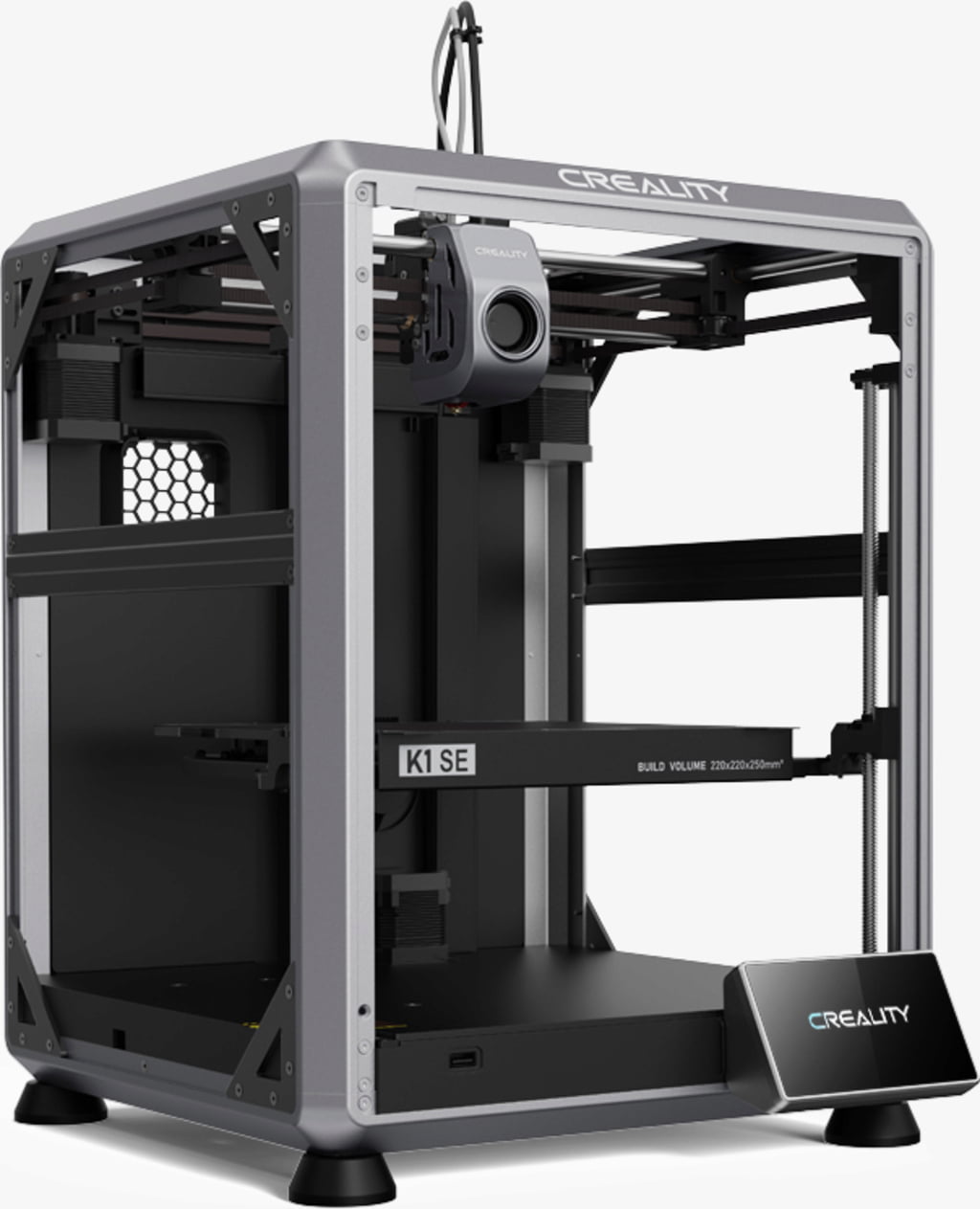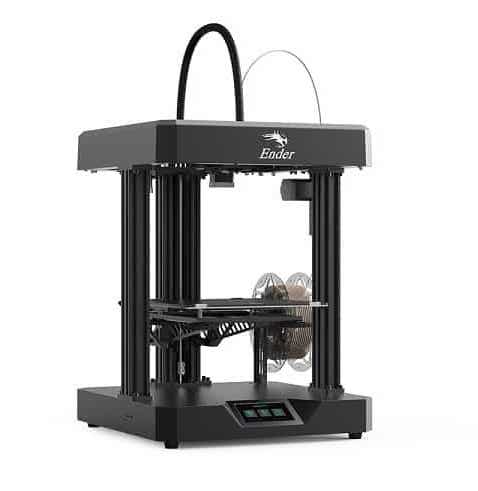Compare K1 SE vs Ender 7
Comparison between the best 3D printers
Choose the best 3D printer at the best price. The cheapest 3D printers are here.
Buy a 3D printer here with 3D Fila.
 |
 |
|
| Model | K1 SE |
Ender 7[BUY Ender 7] |
| Printing Material | Filament | Filament |
| Buy Filament for Creality 3D K1 SE | Buy Filament forCreality 3D Ender 7 | |
| Estimated price | $349,00 | $429,00 |
| Manufacturer | Creality 3D | Creality 3D |
| Release Year | 2023 | 2021 |
| Print Volume [mm] | 220x220x250 | 250x250x300 |
| Printer Size [mm] | 355x355x480 | 430x460x570 |
| Weight [kg] | 10,24 | 17,2 |
| Power Loss Recovery | YES | YES |
| Enclosed printer | NO | NO |
| Bed Leveling | Automatic | Manual |
| Filament End Sensor | YES | YES |
| Bed type | Heated | Heated |
| Power supply system | Direct Drive | Bowden |
| Standard nozzle | 0,4 | 0,4 |
| Maximum Nozzle Temperature [°C] | 300 | 260 |
| Maximum Bed Temperature [°C] | 100 | 100 |
| Maximum printing speed [mm/s] | 600 | 250 |
| Filament holder | YES | YES |
| Camera for supervision | YES | YES |
| Recommended filaments | Hyper PLA, PLA, PETG, PET, TPU | PLA, PETG, Tritan, Flex, ABS |
| Recommended slicers | Creality Print; Cura, Simplify3D e PrusaSlicer | Cura, Simplify, Slic3r, IdeaMaker |
| Maximum Resolution [mm] | 0,1 | 0,1 |
| Processor | Creality CR-FDM V.2.4.S1_V101 32bits | |
| Display | Display touchscreen 4,3'' | Display touchscreen 4,3'' |
| Power Supply | 110/220V / 350W | 110/220V / 350W |
| Connectivity | Ethernet / USB / Wi-Fi | SD / USB |
| Operating systems | Windows, Mac, Linux | Windows, Mac, Linux |
| Date of registration in the system | 2023-08-26 | 2022-11-04 |
| Release date | 2023 | 2021 |
| Extra features | The Creality K1 SE is a high-speed 3D printer with CoreXY system, capable of printing at up to 600mm/s with acceleration of 20000mm/s². It has a dual-gear extruder, easy-to-replace tri-metal nozzle, automatic leveling, and advanced features such as vibration reduction algorithms and intelligent operation. Its rigid cast aluminum frame ensures stability, while the open-source Klipper-based system offers freedom for customization. It is pre-assembled for a simplified and fast user experience. | Crealitys Ender 7 printer offers remarkable print speeds, utilizing CoreXY kinematics for precise and fast movement. With a 250x250x300mm build area, dual direct extruder, and custom hotend, the Ender 7 is capable of printing at high speeds, although quality may suffer on smaller prints. Assembly is relatively straightforward, but the machine is noisy and can get hot. Its true speed potential is most noticeable on larger prints, where it outperforms its competitors. |
| Support for multiple colors and materials (AMS and CFS) | NO | NO |
Notes * |
||
| Cost-benefit | 7 / 10 | 7 / 10 |
| Hardware | 3.5 / 10 | 2 / 10 |
| Tela | . | . |
| Print volume | 3 / 10 | 4 / 10 |
| Performance | 5 / 10 | 2 / 10 |
| [BUY Ender 7] |
Conclusion |
| In conclusion, when comparing the Creality 3D K1 SE and the Ender 7, several key factors highlight the strengths and weaknesses of each printer. The K1 SE, released in 2023, stands out with its higher maximum printing speed of 600mm/s, advanced features such as automatic bed leveling, and a lighter weight, making it more manageable for users with limited space. It also benefits from a direct drive system and an innovative CoreXY kinematic design, which contributes to its overall efficiency and print quality, particularly at high speeds. On the other hand, the Ender 7, while slightly older, offers a larger build volume, which might be more suitable for bigger projects. However, it uses a manual bed leveling system and has lower maximum speeds, which could impact user experience and assembly time. Additionally, while the Ender 7 may perform well on larger prints, it tends to generate more noise during operation and carries a reputation for potentially lower print quality on smaller items. Considering cost-effectiveness, the K1 SE scores higher due to its superior performance metrics and innovative features. Meanwhile, the Ender 7 provides decent value for those who prioritize build volume over speed and advanced functionality. Overall, the decision comes down to individual user needs—whether one prioritizes speed and advanced options or larger print capacity for varying project requirements. |

